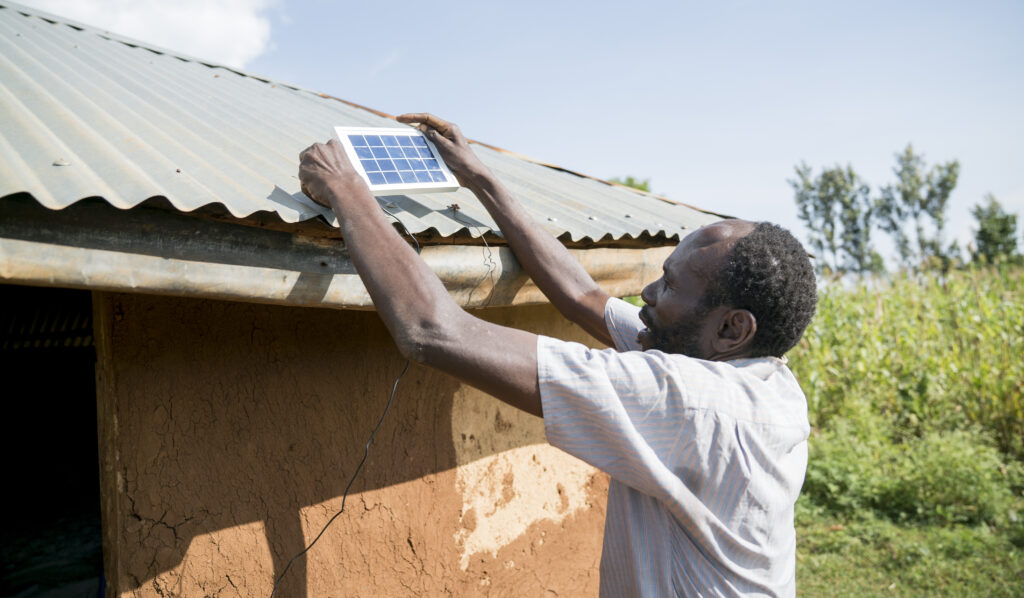
In last-mile markets, overcommitment to one-time sales interactions can limit profitability and hamper business growth. Distribution businesses that invest too heavily in reaching net new customers for every sales effort can end up hindering their ROI through expensive attempts to connect with increasingly hard-to-reach consumers. Establishing longer-term relationships with existing customers in these markets is a smarter and more sustainable sales strategy that can lead to repeat business and multiple sales opportunities. With the right strategy that emphasizes ongoing customer relationships, last-mile distribution businesses can avoid falling into the cycle of conducting primarily transactional sales. Continue reading to discover how last-mile distributors can leverage trade-ins to maximize the lifetime value of devices and enable customers to purchase product upgrades that better meet their evolving needs.

Extend Customer Relationships With Flexible Trade-in Opportunities
When a last-mile customer purchases a product on an incremental payment plan (such as a pay-as-you-go billing model), their needs may change over the duration of their lease and they may wish to upgrade to a different product. In these cases, a distributor can evaluate their customer’s existing loan history to determine if the customer qualifies for a larger loan on an upgraded product and a trade-in of their current device as part of the deal. If the customer’s account is in good health, distributors can capitalize on innovative sales models (covered below) that make use of device trade-ins to encourage an ongoing sales relationship with the existing customer.
1. Trading in a product after a completed loan:
Using this sales model, distributors can offer their customers the opportunity to trade in a product that has been fully paid off in an existing loan for a favorable leasing arrangement on a different, new or more sophisticated product. Based on the customer’s loan history and the condition of the used product at time of trade-in, the customer may qualify for a discount on the new product that will make them more likely to move forward with the purchase.
Some reasons this sales model might be right for you:
- You have a customer segment that has fully paid off loans on existing products and are good, low-risk candidates for leases on new or different product upgrades
- You have determined that certain used devices have a strong resale value and would like to capitalize on leasing these devices to new customers by re-acquiring them via trade-in
- You just added a new product to your portfolio (like TVs or smartphones) that your customers will be interested in and want to incentivize the purchase of this product
Use Case Example: A customer has fully paid off their existing loan on a starter-tier solar home system that is capable of powering a few lights and wishes to upgrade to a more sophisticated solar home system that can also power a TV. The customer can keep their lights from the original system and trade in their panel and battery. In exchange, they receive a new favorable leasing arrangement that allows them to begin payments on a new TV, as well as an upgraded panel and battery that meets their increased energy needs. Based on the condition of the panel and battery they traded in, the customer may qualify for a slightly discounted rate on the new products.
2. Product trade-ins with a partially paid loan:
With this sales model, distributors are able to offer customers with good loan histories the opportunity to trade in a product that has been partially paid off in an existing loan for a favorable leasing option on a new or more sophisticated product. In this case, the customer’s remaining balance on their original lease would be transferred to their new loan arrangement to continue being paid off in addition to the payment terms set for the new product. Similar to the first sales model, the condition of the used product at trade-in could qualify the customer for more appealing pricing options.
Some reasons this sales model might be right for you:
- You have low-risk customers with partially paid leases on existing products that are frequently interested in purchasing product upgrades
- You just added a more appealing version of an existing product to your portfolio (like a larger TV) that your customers will be interested in and want to incentivize the purchase of this product
- You would like to encourage ongoing relationships with your best customers by extending the lease cycle
Use Case Example: Six months ago, a customer made a downpayment for a solar home system and a small TV. A football match featuring the customer’s favorite team is about to air and they wish to upgrade their TV to a bigger, more current model while retaining their existing solar home system. Their payment history shows that they have consistently paid on time and are in good standing. The customer keeps their solar home system and trades in their outdated TV. In exchange, the customer receives a new TV and their remaining balance for the solar home system is transferred to a new payment plan which includes a pricing structure that reflects additional payments for the new TV. Based on the condition of the used TV at time of trade-in, the customer may qualify for a discounted rate on the new product.

Easily Repurpose Used Products to Extend Their Lifetime Value
The sales models described above are appealing for both the customer and the distributor. The customer can leverage their good account standing to acquire product upgrades that better meet their needs and the distributor will likely be able to re-sell the used device as a refurbished or replacement product, extending its lifetime value and creating additional sales opportunities. Distributors can also offer the customer additional services to be included in their new lease, such as an insurance plan or a product warranty. This further extends the sales cycle with the customer and increases the likelihood of an ongoing relationship.
The process of providing last-mile customers with these affordable and convenient purchase options doesn’t have to be difficult for distributors from an administrative perspective. In fact, the Angaza platform allows distributors to easily manage inventory by accurately tracking device history and providing options for device labeling that indicate the status of the device (ex: ‘traded in,’ ‘needs inspection,’ ‘ready for resale’). Distributors are also able to track a device throughout its lifecycle, determining which product types are reselling most successfully and which products are spending the most time with customers.

Encourage Future Purchases With A Sales Strategy That Meets Customer Needs
It’s important to remember that a well-rounded last-mile sales strategy will strive to create lasting relationships with customers. Satisfied customers who are able to access flexible payment options to meet their product purchasing needs conveniently and affordably will be more likely to recommend a distribution business to their peers. This can help expand a distributor’s customer network, resulting in even more sales interactions. With the right tools and payment strategies, last-mile businesses can create sustainable sales growth while providing consumers in emerging markets with opportunities to access transformative products that would otherwise be cost prohibitive.
To learn more about all of the flexible last-mile purchase options Angaza enables, including the ability to conduct product upgrades with device trade-ins, contact your Angaza Customer Success Manager or get in touch with us via our contact page.


